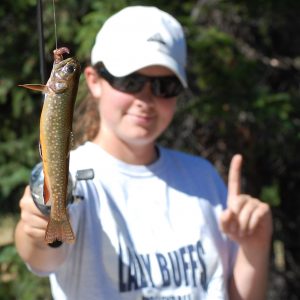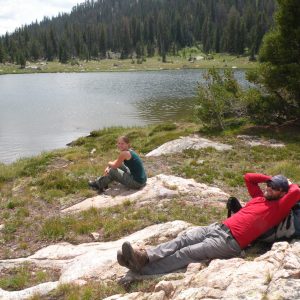November has come, and it is time to end my internship here at the Alturas BLM Field Office. With an extension, I worked here as a botany intern for a total of seven months. The first snow has fallen, the trees are losing their leaves, and the landscape looks similar to when I first arrived in early April.
Arrival in Modoc County was nothing short of a shock for me. I am from the opposite end of California, the benign coastal town of Santa Barbara. Although located in the same state, Santa Barbara is extremely different from Alturas, in almost every sense. As I made my motorized transect across the state last April, I knew I was in for an interesting summer. Once I passed over the Sierras, I came upon the high desert scenery of Northeastern California, namely sagebrush, junipers, and volcanic rocks. I made it to the town of Likely, population 200, and waited across from the old fashioned general store and saloon for my mentor to show me to the BLM fire station where I would be staying. We drove past pastures and cows, up into the junipers, to the fire station. I was soon by myself. I felt like Edward Abbey in Desert Solitaire, the lone steward of thousands of acres of desert. I found out that Modoc County’s motto of “Where the West still lives” could not be more accurate. I learned that the local Verizon wireless retailer also sells guns and ammo. Conversations in the office seemed to primarily be about hunting, and a local pastime is shooting squirrels. I was amazed by some of the towns in the area, for example Ravendale (population 26). I realized that Modoc County has a population of less than 10,000 and many of the towns are remnants of the homesteading era that have undoubtedly changed, but changed much less than anywhere I have ever seen. During my first week of work it was snowing and raining, and I spent some long days in the office going through the herbarium, and, to be completely honest, questioning what on Earth I was doing out here. But then my coworker Jaycee arrived, as well as other seasonals, and field season began.
As summer unfolded, I began to realize that despite the isolation and different culture here, I was in for a truly great experience. The uniqueness of working in this area was not lost on me. I would do things like startle coyotes, pronghorn antelope, and wild horses at a watering hole down the road from an old Basque sheepherder’s bunkhouse. Or drive for two hours down gravel and dirt roads to a dried up reservoir where a man driving an ATV and wearing a cowboy hat, boots with spurs, and an old fashioned six shooter holstered to his hip greeted us. I was also getting paid to do what I absolutely love. It was easy to forget that I was “working” when I was driving and hiking around all day collecting bouquets of wildflowers and scheming to collect their seeds. I don’t think I have ever been so excited during a job. I was rarely bored as the tasks were so varied, including rare plant surveys, seed collecting, transects, creating maps with ArcMAP, pressing and mounting herbarium specimens, and more. The locations were varied as well, and after driving down countless 4-wheel drive roads and looking at maps, I have come to know the land that this office manages far better than the natural areas surrounding my hometown.
Working for the BLM has given me valuable insight into what working for a multi-use government land management agency is like. I have learned about myriad facets of natural resource management such as rare plant clearances, juniper encroachment, wildfires, endangered species, rangeland management, etc. I have learned over and over that no issue is black and white. As my mentor put it, sciences like rangeland management are applied ecology, and every case is different, based on a multitude of factors. This dynamism is what makes these fields so interesting to me. I have also realized that being an intern is different than being an actual BLM employee. Although it concerns me that the ecosystemic processes that I find so fascinating are often bogged down in paperwork, I also know that this is how things are done in the world of land management in this day and age. Agencies like the BLM have incredible pressure from environmentalists, ranchers, politicians, and everyone in between. The BLM straddles a line between these groups, a line that I don’t always agree with, but also one that I have gained a lot more respect for. Perhaps most important of all I have seen is that there is a place in agencies like the BLM for those concerned with conservation, and that this seems to be a growing trend.
Well, I guess it’s time for the next adventure. In just over a month I will be traveling to New Zealand to work on farms, hike, and learn a completely new flora. After that, I imagine I will continue working for a land management agency and in the next few years I want to go to grad school, and this internship will be instrumental for these plans. I’ll miss the wide unobstructed views, the unpeopled landscapes, the stunning clouds, the smell of freshly crushed sagebrush, and never needing to worry about finding a parking place. Some pictures:

The Warner mountains after the first fall snow.


A finished herbarium specimen, one of several we were able to add to the office herbarium.



11/1/12Joe Broberg Alturas BLM Field Office





















